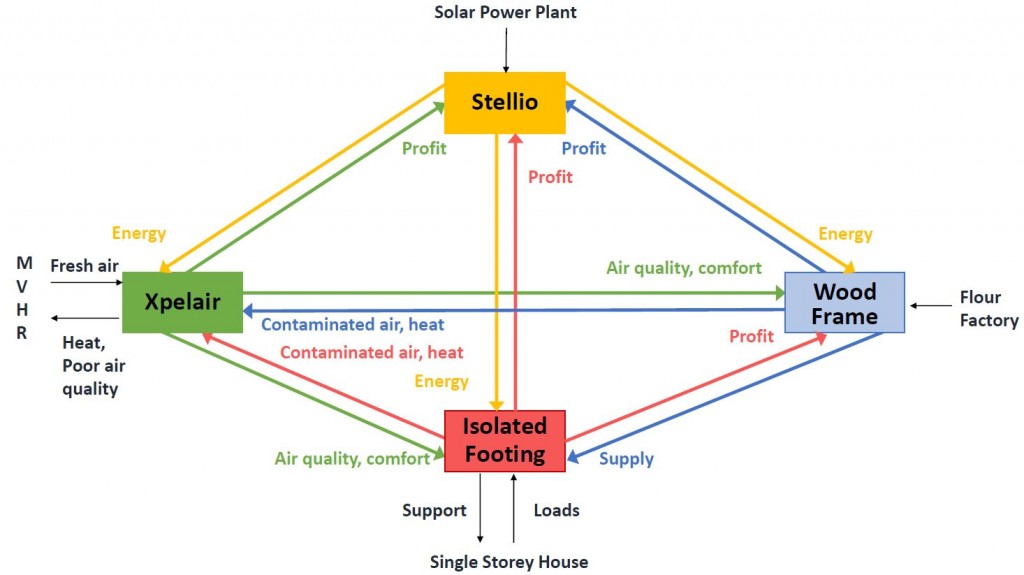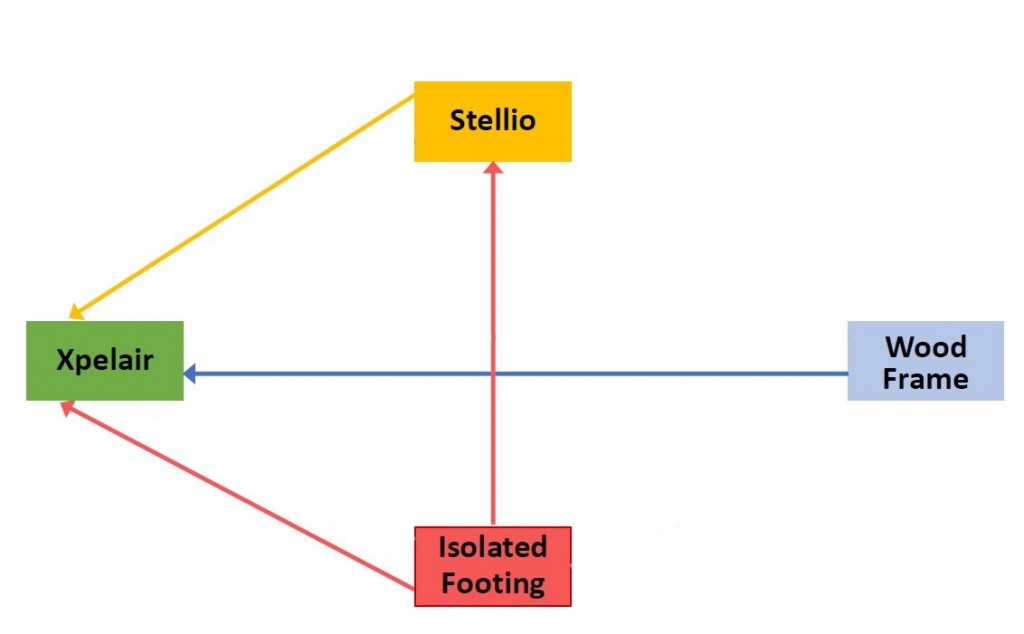To understand the relations and interactions of different components as well as interfaces in maintenance planning within a closed system an Integrated Life Cycle Model will be established. This integrated model consists of a Flour Factory, a Mechanical Ventilation System with heat recovery (MVHR), a Solar Power Tower Plant (PT) as well as a Single Storey House. In detail, the focus will be placed on the subsystems of the Wooden Frame of the Flour Factory, the Xpelair as an example of a MVHR, the Stellio as a part of the PT as well as the Isolated Footing of the Single Storey House.
The subsystems as well as the associated components are introduced on the linked sub-pages.
In general, the integration of these diverse subsystems takes place by a maintenance strategy. As each component is connected to different intervention actions with different frequencies and durations, the downtimes of each component vary significantly. In order to satisfy multiple objectives, which will be explained during the Multi-Objective Optimization, these interventions have to be coordinated and bundled. Thus, the total downtime of the integrated system as well as maintenance costs can be reduced as well as efficiency and sustainability increased.
The following figure summarizes the relationships and interactions of the integrated system. In the following it will be referred to the components although the individual systems as a whole are contributing with goods or service to a connection between the components. But a clear distinction between the subsystems and their components is impractical.
The Stellio produces electricity and provides it to the other systems. In return, the operator of the Stellio earns money.
The Xpelair is responsible for the comfort within the Flour Factory as well as the Single Storey House. It offers the service of dehumidification, filtering, heat recovers and fresh air by removing contaminated air and replacing it with fresh air.
Being part of the supporting structure, the Wooden Frame guarantees the production and supply of flour for the residents of the Single Storey House as well as the workers/ operators of the Stellio within its framing space. The sale of flour leads to a monetary profit for the owner of the factory.
The task of the Single Storey House is to provide shelter and basic amenities for living for its residents. As the foundation of the house, the entire supporting structures, like walls or ceilings, are grounded on the Isolated Footing. Thus, it guarantees the living space of the residents and represents a crucial part of the structure. The Isolated Footing is connected to all other systems using electricity, comforting amenities and flour supply. In return, the residents have to spend money for the provided services.
Fig.1: Summary of the relationships and interactions between the subsystems of Integrated Life Cycle Model
The described relations between the subsystems/ components lead to an interconnection concerning the functionality of every system. Thus, the malfunction of one component due to a failure or maintenance need will have a direct impact on the other components and their usability. These interfaces can be named as following and are summarized by the following figure.
- If the Stellio is in service, no electrical power can be provided to the Xpelair. Thus, the ventilation system will be out of service at the same time.
- If the Frame is in service, the Flour Factory is not accessible anymore. Thus, the necessity of the ventilation system’s service is not needed. The Xpelair will be out of service at the same time.
- If the Isolated Foundation is in service, the Single Storey House has to be evacuated. Thus, the usage of a ventilation system and electrical power is not needed.
Fig.2: Summary of interfaces of the subsystems of Integrated Life Cycle Model
In addition, the systems are connected by the parameters of the length and width, meaning that the same values for the latter are used as input parameters for each system in order to calculate the system’s volume. But as it makes no sense to use the integration parameters in a sweeping way, so that the formulas for calculating the volume have been adjusted by a reduction factor. A detailed example is given here.
Subsystems of the Integration Context:

